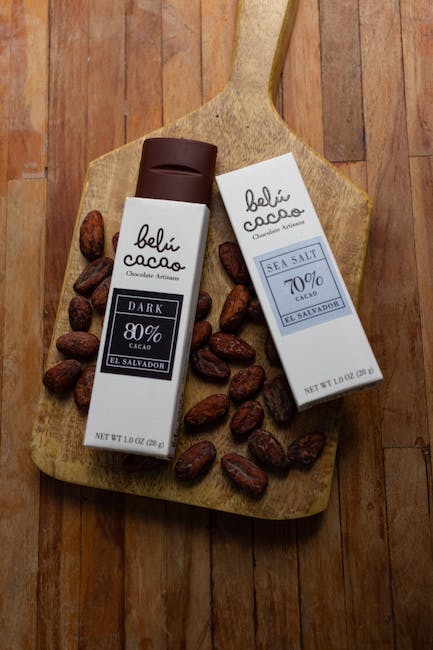You might be curious about how this delicious treat is made if you’re a chocolate lover. In this article, we will take you on a journey from cacao beans to chocolate bars, comprehensively examining the chocolate production process. We will delve into the different stages involved, including harvesting, fermentation, drying, roasting, grinding, conching, and tempering, and provide some interesting facts about chocolate.
The Harvesting of Cacao Beans
Cacao beans, the main ingredient in chocolate, are harvested from the cacao tree. The pods on the tree contain the beans extracted by hand. The harvesting process can be pretty labor-intensive, as the trees can grow up to 30 feet tall, making it difficult to reach the pods.

The Fermentation Process
Once the beans are extracted from the pods, they are fermented in large piles or special fermentation boxes. Fermentation is a crucial part of the process, as it helps to develop the flavors and aromas of the chocolate. The fermentation process usually takes five to seven days and involves regularly turning the beans to ensure even fermentation.
The Drying Process
After fermentation, the beans are spread out to dry in the sun. This process can take several days, and the beans must be turned regularly to dry evenly. Once the beans are dry, they are ready for roasting.
The Roasting Process
Roasting is the next step in the chocolate production process. The beans are roasted at high temperatures, which helps to develop the flavor and aroma of the chocolate. Depending on the desired flavor profile, roasting times can vary but typically last between 30 and 60 minutes.
The Grinding Process
After roasting, the beans are cooled and ground into cocoa liquor. The cocoa liquor is then further processed to separate the cocoa solids from the cocoa butter. The cocoa solids are used to make cocoa powder, while the cocoa butter is used to make chocolate.
The Conching Process
The cocoa butter is mixed with sugar and other ingredients, such as milk powder and vanilla, and then ground into a smooth paste. This process is known as conching, and it can take several hours or even days to complete, depending on the desired texture and flavor of the chocolate.
The Tempering Process
The final step in the chocolate production process is tempering. Tempering is the process of heating and cooling the chocolate to a specific temperature to ensure it has a smooth and shiny appearance and a satisfying snap when broken. This process can be quite delicate and requires skill and experience.

Interesting Facts About Chocolate
- The Aztecs used cacao beans as currency.
- Milk chocolate was invented in Switzerland in the late 1800s.
- White chocolate isn’t chocolate, as it doesn’t contain cocoa solids.
- Chocolate can contain small amounts of caffeine.
- Dark chocolate contains flavonoids, which have been linked to a lower risk of heart disease.
Conclusion
From harvesting cacao beans to tempering chocolate, the chocolate production process is a fascinating journey. Each step is crucial in developing the unique flavors and textures that make chocolate so beloved worldwide. Whether you’re a chocolate lover or simply curious about how this sweet treat is created, we hope this article has comprehensively examined the chocolate production process.
FAQs
Q: What is the difference between milk chocolate and dark chocolate? A: Milk chocolate contains milk powder and has a milder flavor than dark chocolate, which is made with a higher percentage of cocoa solids and has a more pungent, bitter taste.
Q: Is chocolate good for you? A: Chocolate can have health benefits when consumed in moderation. Dark chocolate, in particular, is rich in antioxidants and flavonoids, which have been linked to a lower risk of heart disease and improved brain function. However, it’s important to remember that chocolate is also high in sugar and calories, so it’s best to enjoy it in moderation as part of a balanced diet.
Q: How long does the chocolate production process take? A: The chocolate production process can take several days to several weeks, depending on the desired flavor and texture. The fermentation and drying stages alone can take up to two weeks, while the conching process can take several hours or even days.
Q: What is white chocolate made of? A: White chocolate is made from cocoa butter, sugar, and milk solids, but it doesn’t contain any cocoa solids, which gives it its distinctive creamy color and sweet flavor.
Q: How is chocolate used in cooking? A: Chocolate can be used in a wide range of sweet and savory dishes, from chocolate cakes and brownies to mole sauce and chili. It can be melted, grated, or chopped into small pieces and added to recipes to provide flavor, texture, and richness.
